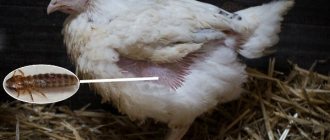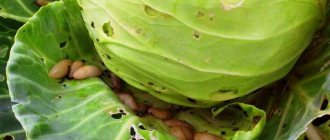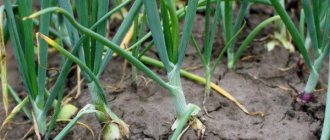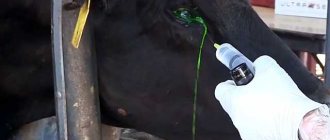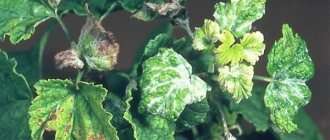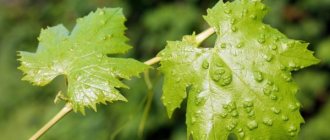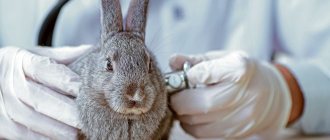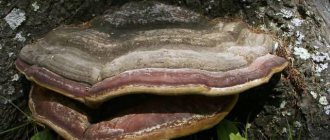How to rid chickens of lice and fleas?
In order to fight harmful insects, there is no need to find out their specific entomological affiliation, since the reasons for their appearance and the methods of combating them are the same.
There are several pharmaceuticals and folk remedies that can save chicken flocks from trouble. However, almost all methods of treating head lice have one or two disadvantages:
- adults are destroyed, but eggs (nits) remain, which can provoke a relapse;
- some drugs remain in the bird’s body for a long time, which makes chicken meat and eggs unsuitable for consumption.
The first situation can be easily corrected. Repeated treatment carried out within the recommended time frame will destroy the offspring that have escaped the protection of the chitinous shell.
The next trouble is more difficult to overcome, but quite possible. You should use products that are safe for birds and humans. The sooner an infestation is detected and treatment is started, the easier it is to remove the parasites.
Measures to prevent down-eaters in chickens
To avoid infection of the chicken population with lice-eaters and feather-eaters, experts recommend a number of preventive measures, including:
- providing sufficient space to prevent the accumulation of a large number of individuals in a small area of the chicken coop;
- daily treatment of the chicken coop premises using disinfectants;
- taking measures to prevent impurities, rodents and dirt from getting into the feed;
- organization of air exchange and ventilation systems in the room;
- ensuring timely change of bedding to prevent contamination of birds with traces of the droppings they produce.
Prevention of downy eating in chickens video
Feather eaters and lice eaters in chickens are parasites that live in the base of the feather and down cover on the surface of the skin of chickens. In addition to the negative impact that mites have on the health of poultry, the presence of lice leads to a decrease in egg production, slower growth and the formation of muscle mass in meat chickens.
If signs of insect damage to laying hens are detected in a timely manner, the treatment period does not exceed several weeks. However, in a neglected state, treatment against parasites can take up to six months. And it can be complicated by the presence of infection when the pathogen gets into areas of the skin damaged by the bird.
Therefore, it is very important to detect in time and begin to remove feather food from chickens. Don’t forget to subscribe to site updates to be among the first to receive the latest chicken news by email
Don’t forget to subscribe to site updates to be among the first to receive the latest chicken news by email.
Good luck and success to you, see you again!
See modern products for poultry and livestock farmers that improve the health of pets and make our work easier.
Correct use of insecticides
Aqueous solutions for bathing, spraying birds and premises are prepared strictly in accordance with the instructions in the attached instructions, they are used in compliance with all safety precautions. Sprays are sprayed under the wings and tail of the bird; a prerequisite is that the head must be covered so that the product does not get into the eyes and mucous surfaces of the chickens
The drops are applied to the withers, directly to the skin, and not to the feathers of the bird.
Treatment of chickens
It is extremely difficult to combat ectoparasites, fleas and ticks in chickens; they are light in weight and have weak immunity. You can try treating them with Nyuda spray for children or using traditional medicine.
Advice! Experienced poultry farmers advise getting rid of parasites on young birds only using folk remedies.
The fight against parasites in chickens with folk remedies goes back hundreds of years, and many remedies have been tested by chicken breeders in modern conditions and have shown good results.
Traditional methods of ridding chickens of lice, fleas and ticks
What to do to rid chickens of parasites and cure them with folk remedies?
Here is a selection of recipes that have long been used by our ancestors:
- A mixture of kerosene and bite in equal parts. A glass of this product is diluted into a bucket of water and the bird is bathed in this mixture.
- Strong alcoholic infusion of hellebore root. Half a glass of infusion is diluted into a bucket of water and sprinkled under the wings and tail of the bird.
- Infusion of chamomile. Rub directly into the skin of the chicken for ten days. This method of treatment is also suitable for chicken.
- Ash and sand baths. In general, they should be present in the chicken coop and on the run at all times. Chickens, bathing in them, will get rid of parasites themselves.
- A mixture of ammonia, kerosene and benzene in equal parts can repel any parasite with its smell.
- Powder or infusion of wormwood used in the chicken coop or on the feathers of chickens will repel parasites.
- You can add wormwood, tansy and chamomile to the litter for prevention and as a deterrent.
Prevention
To protect your chickens from this scourge, you need to keep the chicken coop clean and maintain order every day. Litter and excrement must be constantly removed and taken out of the premises to a specially designated place where chickens do not have access. No heaps on the walks or in the corner - this is a breeding ground for the disease and a headache from long and tedious treatment, which can last up to six months. In addition, you need:
- Regularly treat perches and feeding areas with boiling water so that lice and feather eaters do not have a chance to linger in the chicken coop.
- Remove uneaten food residues so as not to create a favorable environment for parasites and not to create dampness.
- Do not allow poultry to come into contact with wild birds, which are quite capable of carrying parasites on their plumage. Walks should be covered or covered with netting.
- Do not exceed the area standards for keeping poultry. Crowding leads to lightning-fast infection from each other and through the litter.
- Ventilate rooms regularly, even in winter, since dampness and stagnant air are the most attractive environment for ectoparasites.
- Install ash and sand baths on the paddocks and in the chicken coop, keep them clean and change the contents as they become dirty.
- Buy food only from trusted manufacturers.
- Conduct a preventive visual inspection of birds to identify individuals with behavioral abnormalities - itching, tearing out feathers, sad, emaciated, and so on.
- Disinfect the premises once every three months using Butox or its analogues.
- Do not visit your chickens wearing clothes and shoes that you have worn in someone else’s chicken coop or at a market where they sell animal feed.
- A chicken family newly arrived on the farm must be kept in strict quarantine for a couple of weeks.
- Getting rid of rodents, which may well bring the disease on themselves.
Can chicken fleas and lice settle and live on humans? No, they can't! Of course, they can jump or crawl onto a person while interacting with an infected bird, and in some cases even bite; they will not stay on a person for long.
A person's lower body temperature and thicker skin will not allow them to feel comfortable. The parasites will prefer to leave the inhospitable host and die, unable to obtain food for themselves on the human body. Other animals such as cats, dogs, pigs, cows are not suitable for chicken parasites. But they have their own.
It is easier to prevent any disease by following established standards than to treat it for a long time and carefully.
What diseases are carried?
Doctors are still extremely wary of ectoparasites, because just a few decades ago they caused epidemics among people. Chicken parasites are not carriers of typhoid, cholera, or plague, unlike, for example, rat parasites. But numerous bites can provoke not only inflammatory processes on people’s skin; many pathogens of dangerous diseases penetrate into the body through wounds.
But for neighboring farms and households, the threat is very real - ectoparasites move quickly from poultry house to poultry house, spreading diseases that are contagious to chickens. One individual infected with pseudoplague poses a threat to hundreds of animals. Therefore, it is important to immediately begin getting rid of lice, fleas and other insects.
Preventive actions
It is not always possible to prevent the invasion of mallophages
But if you pay due attention to prevention, the risk of parasite infection can be reduced to zero
To prevent livestock from becoming infected with chicken lice, you need to:
- Place containers filled with a mixture of fine sand and ash in the chicken coop. Birds should always have the opportunity to take dust baths.
- Protect the poultry house from rodents (mice, rats).
- Do not allow domestic chickens to come into contact with wild feathered relatives (sparrows, pigeons, crows).
- Regularly clean the shed and the surrounding area, frequently change the bedding and remove droppings, and control the humidity level in the room.
- Carry out antiparasitic treatment of the chicken coop and the entire livestock 1-2 times a year.
- Wash and disinfect feeders and drinkers weekly.
- After visiting someone else's poultry house, change clothes and shoes so as not to carry larvae or adult mallophages.
- Periodically inspect chickens for the presence of feather eaters. If parasites are found on at least one chicken, disinfest the entire flock and the chicken coop.
- In the autumn-winter period, add vitamin and mineral supplements to the feed to help strengthen the birds’ immunity.
Newly acquired laying hens should not be allowed into the chicken coop without prior antiparasitic treatment with chemical or folk remedies.
Previous LiceWhat pubic lice look like Next LiceWhich shampoo to choose against lice and nits
Peredot: description of what it looks like
This tiny insect, 2 to 3 mm in size, settles on the body of poultry. Due to their rather small size, it is difficult to determine why poultry feathers fall out, pecking occurs, and the bird itself becomes restless.
So:
- Tiny parasites that live on the body of poultry are nothing more than “chicken lice”. The scientific name of the disease is mallophagosis, and small parasites are mallophages.
- These insects do not have wings, and the body has a flat, slightly elongated shape. The body is divided into segments. Insects lead a parasitic lifestyle.
- Dark stripes can be seen between the segments. The body is characterized by a light brown color with a yellow tint.
- To stay firmly on the insect's body, mallophages are armed with tenacious jaws and three pairs of legs. Parasites do not feed on the bird’s blood, but consume feathers and down, discharge from pecking wounds, and dead skin particles. For normal functioning of the parasite, a humidity of about 70-80% is needed, as well as a temperature of up to + 30 degrees.
- The eggs of the parasite can only be seen under a magnifying glass, since their size is no more than 1.5 mm. The female lays eggs on the feathers or down of the bird, after which, after 6-18 days, depending on the conditions, the larvae are born. Before becoming an adult mallophage, the larva molts 3 times. Each molt occurs after 12-18 days.
- The parasites are highly fertile, as the female lays 10 eggs every day.
- The parasite can live on the body of poultry for about 30 days, and outside the body - no more than 6 days. Mallophages spend almost all their time on the body of poultry.
Life cycle and behavioral characteristics
Adult chicken fleas tolerate temperatures of +40 degrees. They almost always remain on the body of an infected bird.
Sexually mature females lay eggs almost daily, which they scatter around the room with their developed hind limbs.
After hatching, chicken flea larvae resemble small worms. They live in the thick bedding on the floor of the chicken coop.
The main diet of underdeveloped individuals consists of organic matter from chicken droppings; they also feed on rotten food, grass, and dry blood.
After passing through the growth stage, a morphological change occurs, then transformation into an adult and parasitism on poultry.
The lifespan of a chicken flea is up to one and a half years. The average period is 8-10 months.
Getting into the chicken coop occurs in the following ways:
- infection from wild birds that are carriers of the pest;
- spontaneous migration of microorganisms from neighboring farms or poultry farms;
- along with the bedding.
Be sure to read:
What are the most common diseases of broilers, their symptoms and treatment
Due to rapid reproduction, extremely rapid spread throughout the chicken coop or farm begins.
How to remove ticks from chickens
This insect is a real disaster, how to deal with them if it hides in the most secluded places of the chicken coop, where even strong solutions are out of reach.
This problem faces not only amateur poultry farmers, but also industrialists. The saddest thing is that the folk method in the form of sand baths does not help (there are no ticks on the chicken during the day, or few). At the moment, biologists are searching and no treatment has yet been developed.
Chicken mite
Folk remedies such as garlic, vinegar, yarrow, lavender, etc. (the list goes on for a long time) do not help.
You can treat the chicken coop with the drugs listed above, as well as:
- "Acromed";
- Medifox;
- "Avicin";
- "Medilis".
The poultry farmer can be consoled by the fact that with the onset of cold weather, the mite goes into hibernation (it can remain hungry for 12 months). However, with the arrival of warmth, it intensifies its activity. There is information that when searching for how to deal with ticks, flypaper was used and the insect was actively sticking. But as a remedy for fleas and fluff eaters, Velcro is completely unsuitable.
A very good method is firing with lamps. However, it is only acceptable for metal structures.
As one of the methods, it can be proposed to completely empty the chicken coop of birds for a year. However, this does not guarantee that the imported young animals will be “clean”.
Statistics show that there are no longer tick-free farms. Its distribution area is so large that it becomes impossible to completely cure the population. Arachnologists are constantly searching for ways to combat this scourge.
If the product is not intended, then the active substance passes into the blood, meat and eggs and the high-quality product turns into poison.
It is important not to use drugs (even as an experiment) if they are not intended for these purposes. For example, insecticidal smoke bombs (“City”, “Yamal”, “Quiet Evening”) work well against insects, but they “do not kill the red chicken mite”
Don’t know what to feed laying hens to help them lay eggs better? The answer is here: https://inkubatorinfo.ru/ukhod/kak-uvelichit-yaycenoskost-kur.html
By observing the habits of the bird, looking closely and listening, you can easily determine who lives on the bird. If you do this in a timely manner, it becomes easier to deal with parasitic insects. By organizing baths, you can prevent fleas, lice eaters, and feather eaters from entering your poultry yard. Frequent cleaning, changing bedding, treating cages, nests and perches will help regulate the number of mites until they are eliminated.
Loading …
Symptoms of appearance
It is difficult to see a small pest with the naked eye due to the peculiarities of its appearance:
- size: 1.5–2 mm;
- color: dark brown;
- eyes and antennae can be distinguished;
- there are no wings, but the hind limbs are very long, thanks to which they can jump far;
- the chitinous shell is harder than that of other flea species, so it is more difficult to crush a chicken flea;
- the body is very hunched and completely flat, which makes the insect practically invisible when viewed from above, and it is impossible to hold it with your fingers.
The presence of fleas in a chicken can be determined by the following signs:
- egg production decreases;
- lethargic and nervous behavior;
- disheveled and unkempt appearance;
- the bird eats as usual, but loses weight;
- the chicken itches and plucks its feathers;
- clusters of fleas on the crest, around the beak and eyes resemble moles; their presence indicates that the whole body under the feathers is already swarming with them.
Did you know? The chicken flea is a jumping champion. She can cover up to 1.5 m in one jump.
If one or more signs are detected, you must act immediately.
What is the danger of lice and fleas?
Lice and chicken fleas are parasites that feed on the blood of their prey. The most common species among chickens are the red chicken mite and the chicken flea. They can appear not only due to the pollution of the chicken coop, but they can be spread by other animals, such as wild birds flying nearby. Both types of bloodsuckers primarily cause severe irritation and anxiety in the affected chickens; the birds constantly itch and pinch themselves under their feathers. Over time, they scratch the upper layers of the epidermis and tear out their own feathers.
As the parasite damage increases, the chickens stop laying eggs and actively moving, and soon they begin to develop anemia and anemia - this can be seen by the pale comb. Following this, they begin to become exhausted and the final stage is death. Besides this, the most terrible fact is that, like fleas in chickens, lice are carriers of infections. First of all, it can be brucellosis, salmonellosis, trypanosomiasis; in rare cases, causative agents of plague and encephalitis were found with them. Absolutely all chicken fleas and red chicken lice are carriers of helminth eggs and when bitten, the likelihood of infection with worms is very high.
All this can spread not only to other animals and birds on the site, but also to humans through the bites and meat of slaughtered birds. Eggs laid during the hatching of fleas and lice are not recommended for consumption, since the chemicals that were used enter the yolk of the egg through the circulatory system. If a person is sensitive to such drugs, an allergic reaction may be caused.
Chicken fleas on humans
The parasites cannot reproduce on humans, but they leave bites if they come into contact with the skin while in the chicken coop. Due to an enzyme in the insect's saliva, the area near the bite site is redder, very itchy, and itchy.
In addition, chicken fleas are carriers of many dangerous and even fatal diseases and helminths.
They carry:
- brucellosis;
- salmonellosis;
- trypanosome;
- plague;
- encephalitis;
- helminthiasis
If signs of chicken fleas appear in the poultry house, treatment should begin as soon as possible to avoid the risk of contracting infectious diseases.
To transfer the pathogen, just 1-2 bites are enough to any place on the body. When working with infected birds, you need to wear boots made of thick rubber, use gloves, a raincoat and other protective equipment.
Lice symptoms in chickens
As a result, the picture is complemented by wounds and bald spots. The bird also has no appetite. Hence exhaustion and low productivity.
Other symptoms:
- Reddened and flaky skin in places.
- Baldness. This sign is the result of lice eating the plumage.
- Retarded growth and development. This sign is typical for young animals.
- Staying awake at night. Even one individual with no sleep serves as an alarm bell.
- Livestock waste.
This is what an unfortunate lousy chicken looks like...
Birds are most susceptible to parasite attacks after molting. Why? The fact is that lice love to feed even on fresh, soft fluff.
The appearance of parasites in chickens may not be noticed at the early stage of development of the disease, but when the lice multiply, the signs of head lice significantly affect the well-being and behavior of the bird.
Veterinarians note the following symptoms of lice in chickens:
- Decreased appetite to the point of complete loss;
- Significant decline in bird body weight;
- Reducing egg production parameters when breeding laying hens;
- Irritated skin with red spots under the down;
- The feathers are not even and have holes;
- The bird begins to look restless, attempts are observed to peck parasites from the body;
- The mucous membrane around the eyes is irritated.
If chickens are infected, their growth is reduced and their condition quickly worsens, since due to loss of appetite, the young do not receive the required amount of vitamins and minerals.
To detect parasites on a bird, it is not necessary to call a veterinarian - you can do it yourself. More often, lice live in those areas of the body where the skin is delicate - under the wings, in the anus, around the eyes, etc.
When the degree of infection is insignificant, fluff eaters practically do not make themselves felt: they do not affect the health, behavior and appearance of the carrier. But with intensive reproduction, the presence of parasites can be determined by the condition of the skin and plumage of chickens.
Chickens infected with lice develop bald spots.
- ruffled feathers;
- inflammation, redness, wounds, scratching on the skin;
- holes on individual feathers;
- necrosis and peeling of individual areas of the epidermis;
- partial loss of feathers;
- baldness in the anal area, on the head, neck, chest and abdomen;
- swelling of the eyelids, clouding of the cornea, purulent discharge from the eyes.
Infection with mallophages is evidenced by the restless behavior of chickens, which constantly scratch their beaks and paws, trying to remove insects from themselves. When parasites actively multiply, laying hens suffer loss of appetite, decreased body weight, and exhaustion, which negatively affects egg production.
Pediculosis incidence peaks in autumn and spring.
The following factors contribute to infection and rapid reproduction of parasites:
- poor livestock care;
- unsanitary conditions;
- dampness in the chicken coop;
- poor diet;
- keeping a large number of chickens in a cramped poultry house;
- lack of free range;
- ignoring preventive measures.
Chicken lice can also appear after contact between birds and wild birds or rodents that carry ectoparasites.
Laying hens should be kept in direct sunlight or an incandescent lamp for 10-15 minutes if lice are suspected or for a routine examination. Mallophages love warmth, so they will certainly crawl closer to the light source and be clearly visible. In laying hens, you need to examine the skin under the feathers in the most vulnerable places where there is a concentration of down feather eaters: on the neck, cloaca, belly, and skin under the wings.
How to fight: effective methods
The owners are faced with difficult tasks: to preserve adult birds and young birds, and to prevent the spread of parasitic infection to other chicken coops. Treatment of mallophagosis is a long, complex process: to completely destroy “chicken lice” it takes 3–4 months, often six months.
Veterinarians recommend a combination of synthetic drugs and formulations based on natural ingredients. The use of chemicals gives a noticeable effect, rather destroying parasites. Traditional methods are more effective for preventing infection and repelling parasites.
Drugs
Sick and healthy individuals are treated, and the premises must be disinfested. At the initial stage, it is difficult to determine which of the chickens is infected; the best way out is to use antiparasitic compounds to combat peri-eaters in all individuals.
The drugs are sold at a veterinary pharmacy. The doctor will select a remedy based on the symptoms and the degree of infection of poultry. Compositions against lice and ticks in domestic animals are suitable for the treatment of mallophagosis.
Effective poultry treatment products:
- Frontline.
- Stronghold.
- Celandine.
- Insectol.
- Arpalit.
Features of application:
close the beak or tie it, treat the back area with the selected insecticide
Particular attention: bald areas; the optimal distance for applying the spray is from 15 to 20 cm from the feathers; repeated treatment is carried out after a week: toxic compounds cause paralysis in adults, but have almost no effect on egg laying. Before this period, you should not spray or lubricate the backs of chickens/chickens: the birds may die;
To kill feather eaters in chickens, it is prohibited to use the drug in the form of a spray; spraying of the composition is carried out over all feathers, not only on the affected areas
If the treatment is not thorough enough, the parasites move to areas where the drug did not reach and develop further; Chemicals alone are not enough: the optimal result is achieved by combining sprays, anti-lice drops with home methods of fighting against lice.
Effective compositions for disinfestation of chicken coops:
- Cucaracha.
- Executioner.
- Tetrix.
- Battalion commander
- Dichlorvos.
For disinfestation of premises where hens and chicks are kept, preparations against fleas, cockroaches, ants, and bedbugs are suitable. The selection of the composition depends on the degree of infection of the chicken coop. If there is an abundance of parasites, drugs with a high degree of toxicity are required.
Processing rules:
put on a respirator, thick overalls, transparent plastic glasses, rubber gloves; prepare the working solution according to the instructions
Particular attention is paid to the concentration of the composition: many drugs show high effectiveness in a certain environment at an optimal concentration. The packaging of the drug indicates how many milliliters or grams of the product to dissolve in water for disinfection of premises; remove food, take out bowls and feed troughs, throw away wooden products where parasites or their eggs could be preserved; take out the litter, destroy (burn) or take it to a landfill; thoroughly clean the chicken coop from chicken droppings, leftover feed, and straw; treat perches, walls, floor with working solution
When using the composition in the form of a spray or aerosol, slowly go through every centimeter; for disinsection of a chicken coop, a solution prepared on the basis of an emulsion concentrate is preferable: the consumption of an aerosol or spray will be too large, several cans will be needed, which increases the cost of treatment against “chicken lice”; close the doors, wait until the vapors are absorbed into all the cracks; After a certain time, ventilate the room.
Folk remedies
Effective agents for the treatment of mallophagosis:
- baths made of wood ash and sand. A simple way to get rid of parasites, especially before there are too many of them. Combine ash and clean sand, pour into a trough, place in a chicken coop or in an aviary (depending on the time of year). Chickens happily “bathe” in the dust, feather eaters suffocate and quickly die under the layer enveloping their feathers;
- use of medicinal plants. Prepare a strong infusion of chamomile (take 4 tablespoons of dried flowers for 1 liter of water), boil for 5 minutes, drain, rub into the feathers and skin of adult hens and chickens. Powder made from twigs, leaves of wormwood and pyrethrum (a type of chamomile) repels parasites.
Treatment: instructions on how to get rid of it
At the moment, there are two known methods of treating poultry for periodontal infestations:
- Using various chemicals.
- Traditional methods.
In both cases, treatment is quite labor-intensive and long-term. Depending on the extent of the damage, complete expulsion of ticks can take from ten days to several weeks.
This is because the feather eater is very “tenacious”, and also, as happens with ordinary ticks, it can sit out for quite a long time and wait for the future victim in the litter, crevices of the poultry housing building, and garden tools. At the slightest appearance of characteristic symptoms, it is necessary not only to immediately begin to treat the bird, but also to carry out high-quality disinfection of the chicken coop and all equipment used.
Before you start treating the entire chicken coop and floor, of course, the birds need to be removed from there. Old litter with bacteria and elements of wooden structures must be removed and burned to prevent a relapse.
Disinfection
Treatment should be carried out even when you notice at least one chicken suspected of having this disease. You need to act immediately and not put it off “for later” to prevent the mites from spreading throughout the room and to other chickens. It is necessary to treat the chicken coop, outdoor pen, and equipment with the drug. Do this with special care so as not to give the insects the slightest chance of survival.
Nowadays, the following substances are used for disinfection:
- Cyodrine. Water 25% emulsion;
- Entobacterin or oxalate. Aqueous 2% suspension;
- Chlorophos. Aqueous 0.3–0.5% solution;
- Karbofos. Effective insecticide.
Sand-ash baths
There is one very ancient, but effective method of ridding birds of feather eaters. Sand-ash baths will be very useful for chickens infected with the pest. Birds “bathe” in them with pleasure. In order for chickens to be able to cleanse themselves of parasites, it is necessary to mix carefully sifted sand with wood ash in equal proportions. Before doing this, you should get rid of any foreign objects that may be in the ingredients. Such as, for example, small pieces of glass, wire, nails, so that the birds do not get hurt. Ash can be used from any burnt wood or leaves. For better effect, polychloropylene or chlorophos is added to the mixture. Based on 1.5–2% of the total volume of ash.
After bathing in such improvised baths, birds create a thin layer between their skin and feathers. The living environment for pests becomes unfavorable and they die.
Drugs
The most effective remedy for feather eaters is considered to be treating birds with various medications. At this time, there are external preparations used in veterinary practice that affect the life cycle of the parasite, affecting the functioning of the nervous system. And this leads to quick death.
Quite effective means for treating domestic animals and birds are the following drugs:
To treat the room where poultry is kept, as mentioned above, a liquid called “Karbofos” is used. If there are few chickens, you can use products that are used to treat lice in humans. For example, Nyuda spray, etc. It is worth noting that the previously listed drugs do not kill eggs laid by parasites. Therefore, in order to destroy young feather eaters that appear from previously laid eggs, the treatment of the birds is repeated 7–10 days later. The diet table for laying hens at home can be found here.
Folk remedies: fight with your own hands
Just a few decades ago, there were no modern effective drugs for treating chickens from peri-eaters, and proven folk methods were used:
- Kerosene diluted with water or vinegar. Suitable for adults only. The mixture is shaken and applied to the feather cover of the chicken;
- A mixture of kerosene, ammonia and benzene. This drug is also contraindicated for young animals;
- Sand and ash baths. The mixture is placed throughout the walking area for young and adult birds;
- Chamomile decoction. A universal remedy. Treatment with this drug is especially suitable for chickens. There is no risk of poisoning them;
- Powder from ground dry wormwood. Wormwood is especially afraid of fleas and ticks. And after several procedures, the parasites escape. This remedy is used to treat chicks.
Signs of fleas in chickens
A chicken infestation with fleas is diagnosed by a number of symptoms:
- egg production decreases;
- anxiety appears in the behavior of chickens;
- weight loss despite a big appetite;
- they peck and bite themselves, itch, and run constantly;
- bald patches appear on the feather cover;
- near the eyes and crest there are brown crusts - parasitic accumulations that have multiplied in large numbers.
At the initial stage, detecting pests is problematic. It is recommended to regularly inspect the bird stock, especially the skin: lift the feather and carefully examine it. If left untreated, birds develop anemia, which is why they soon die.
Prevention against lice
To reduce the risk of bird infection, it is recommended to use the following tips:
It is important to protect the chicken coop from rodents, wild birds and animals. To do this, it is necessary to eliminate holes in the walls and roof of the room.
For walking birds, you need to use mesh pens that can limit contact with other birds. Make sure the chicken coop is spacious enough. The barn needs to be kept clean. Feed new food and change bedding regularly. It is necessary to constantly remove leftover food and feathers, debris and dirt. To repel insects, you can lay out collections of plants such as wormwood, lavender, and tansy in the barn. Check your chickens monthly for insects.
It is known that it is easier to prevent the occurrence and development of a disease than to fight it.
To protect birds from parasites, a number of preventive measures should be followed:
- Eliminate holes in the chicken coop through which rodents, carriers of the disease, can get to the chickens.
- Birds should be walked in a specially designated area, covered on top and sides with netting to prevent interaction with wild birds.
- Clean the livestock habitat in a timely manner.
- Build the premises according to the number of birds, avoiding overcrowding.
- Use dry lavender, wormwood, and wild rosemary in the litter as parasite repellents. To prevent chickens from eating such herbs, they are placed around the perimeter of the chicken coop, in places that are inaccessible.
- Conduct a preventive examination.
How to remove lice from chickens
To get rid of lice, it is necessary to treat the chickens and the room where they are kept. Inexperienced poultry farmers often do not know how to best treat chickens, so they waste time using various ineffective methods.
Experienced farmers can share their experience on how to rid domestic chickens of lice using folk methods or chemicals. Whichever method is preferred, they recommend processing the birds twice.
Repeated treatment is usually carried out 7 days after the initial one.
Chemicals
When it is necessary to treat chickens for lice, it is very important to select products that will not harm the birds. Numerous veterinary insecticides cope well with this task.
The most effective drugs of this type are:
- Insectoacaricidal powder. Poultry farmers appreciate it for its ease of use. It is enough to apply 1-5 g of the product to the feathers and a pronounced therapeutic effect will not take long to appear.
- Frontline, Beafar. Some farmers prefer such medicines in spray form. Therapeutic manipulation involves spraying the wings of the affected chickens so much that they become wet.
- Promectin. This drug is intended for oral use. It is usually added to the drinking water that chickens consume daily. Most often, this remedy is used to treat young animals and eliminate lice in broiler chickens.
- Butox. Another dosage form option is dry powder. A solution is prepared from it, intended for treating infected birds.
- Neostomazan, Stomazan or 2% oxamate emulsion. Quite effective means, but they are contraindicated for laying hens or those chickens that will soon be sent for slaughter. This is due to the fact that their active ingredients (insecticides) can persist for some time in poultry meat or eggs.
Most properly selected veterinary drugs, when used correctly, do not contribute to poultry poisoning and the accumulation of poisons in its meat or eggs. If desired, poultry farmers can choose the optimal form of insecticide (drug solutions, sprays or powders) for their chickens.
It is recommended to remove lice from chickens with Butox 50. One dose of the product is dissolved in 4 liters of water. It is imperative to maintain the dosage so as not to harm the chickens. And the person who will do the processing must first put on gloves and a respirator.
Spray the chickens generously with the resulting solution. It is more correct to catch each chicken separately and cover their head while spraying.
During manipulation, special attention should be paid to the neck, abdomen and areas under the wings
It is also necessary to treat adult individuals so that in the future the chicks do not become infected again after contact with them. If such drugs are not at hand, as a last resort, you can use flea drops - Celandine, Dana, Bars.
The dosage should be selected based on the weight of the bird and applied to the skin of the chicken. However, it should be remembered that such insecticides do not kill parasite eggs.
Folk remedies
The fight against chicken lice can be done at home using traditional methods.
The lice and feather eater in chickens can be successfully eliminated using the following means:
- Kerosene kills adult lice and partially dissolves chitin in larvae. Infected chickens are treated with kerosene, after which they are quarantined in a separate room. After 7 days, the treatment is repeated.
- To combat nits, lice treatments should include vinegar. Before use, dilute 1 part vinegar with 1.5 parts water. The prepared solution is used to treat the skin and feathers of chickens. Repeated manipulation is performed a week later.
- Some poultry farmers note that tar helped them in the fight against lice. They diluted it with sunflower oil (1:1) and smeared it on the chickens.
- Baths made of sand and ash can be a preventive or additional method of control. It is recommended to rub this composition into the fluff. Or place basins with ash and sand in the chicken coop so that the chickens can give themselves baths.
In addition, medicinal plants that repel them can help in the fight against lice: wormwood, marsh rosemary, tansy. It is recommended to hang bunches of such herbs in the chicken coop or place them in the bedding.
Getting rid of fleas: an integrated approach
It is very difficult to completely get rid of insects. Much depends on the degree of parasite infestation of the bird. The procedure includes three components:
- carrying out disinfestation of the premises in which chickens are kept;
- treating birds with anti-flea agents;
- taking preventative measures to prevent re-infection.
Disinsection of the chicken coop and processing of the poultry must take place in parallel.
Chicken coop treatment
To get rid of chicken fleas in a chicken coop, you need to treat all surfaces, including perches, feeders and nests, with an insecticide solution After finishing the treatment, you should wait several hours.
It is important to remember that the room must be cleaned after the disinfestation process is completed. Old litter and garbage must be removed or burned. The treated room should be rinsed with water and, if possible, treated with lime.
Non-flammable surfaces can be burned with a blowtorch. It should be taken into account that it will take a long time to fight pests - it is advisable to repeat the disinfestation procedure after 2-3 weeks (insects at the pupal stage are less susceptible to poison and can survive).
To treat chicken coops use:
- chemical preparations based on chlorophos, karbofos, organochlorine compounds, etc. These are extremely effective products, but very toxic and can harm chickens. Before use, the bird should be moved to another room;
- synthetic pyrethroids, which, acting on the central nervous system of insects, cause their paralysis and death. You can carry out the treatment without removing the birds from the premises, but you should refrain from eating their eggs and meat for several days;
- natural pyrethroids (solutions of Dalmatian chamomile, mixtures of wormwood and tansy) are safer for poultry and people, but less effective. The advantage of natural remedies is the ability to prepare them at home.
You can move the cleaned chicken coop after ventilation.
Individual processing of birds
In parallel with disinfestation of the chicken coop, it is necessary to destroy pests directly on the birds . This is the most difficult and important part of the pest control procedure.
There are several ways:
- applying special drops (“Pyrethrum”, “Sevin”, etc.) to the back of the bird’s head;
- bathing and spraying feathers (solutions of Butox 50, Aversect, etc.);
- treating chickens with a brush or cotton swabs with powders (deltamethrin powder, dry Pyrethrum) - in this case, it is necessary to ensure that the drug does not get on the mucous membranes or in the eyes of the bird.
The anti-flea product should be applied to the bird's withers and carefully and thoroughly rubbed into the skin using a cotton swab (as shown in the photo)
When using, you must strictly adhere to the instructions supplied with the drugs so as not to harm your poultry.
Application of birch tar
Birch tar is a kind of our national brand. In the households of Russian peasants, this substance has been used for centuries for medicinal, veterinary and many other purposes. Until the beginning of the 20th century, tar was produced annually in large quantities, was one of the most important domestic exports, and was highly valued in Western European countries.
Today, birch tar is a common pharmaceutical preparation that summer residents who want to receive environmentally friendly products successfully use in the field of livestock and poultry farming, as well as when caring for their garden plots
Birch tar is an oily, thick, dark brown or black liquid with a strong, characteristic odor . The product is completely natural. It is made by dry distillation of birch bark taken from young birch trees. Tar is harmless to people, pets and birds not only when used externally: getting it into food does not pose any health hazard. In medicine, the product is used to treat skin diseases, and is included in some pharmaceutical preparations (for example, balsamic liniment according to Vishnevsky), as well as perfumery and cosmetic products (tar soap, shampoos and creams).
The popularity of birch tar is due to the following properties:
- extremely high antibacterial and antiseptic activity;
- the ability to quickly and effectively destroy or repel many parasitic insects and pests of garden crops;
- the possibility of use for the healing of minor skin lesions resulting from injuries or bites of blood-sucking parasites;
- ease of use;
- availability and relative cheapness.
The drug is perfect for ridding poultry of fleas, ticks, feather eaters and other insects that cause damage to the skin or plumage. In addition, tar is widely used in veterinary medicine (as an internal and external remedy): it is used to treat horses, cows, sheep, goats and pigs for a wide variety of ailments, from skin and hoof lesions to diseases of the digestive and respiratory tract.
In chickens infected with fleas, birch tar is carefully applied to areas of the skin that have been bitten by parasites, as well as those that have been pecked and scratched due to severe itching . Already after the first procedure, the number of fleas hiding in the plumage decreases sharply, since insects cannot tolerate the resinous smell of the drug. The product has a pronounced wound-healing effect, relieves itching and pain. Therefore, wounds on the skin of birds quickly heal, and the upper layer of the epidermis quickly regenerates.
To clean the chicken coop , a fumigation procedure is carried out in the room. Step by step it looks like this (material consumption is given for processing a room up to 50 sq. m.):
- 100 ml of birch tar is mixed with 800 ml of dry sawdust and left for 1 hour for thorough soaking;
- a wide vessel (for example, a basin) with a volume of 4-5 liters is filled with charcoal (you can take a store-bought one, which is intended for cooking kebabs). The coal is set on fire and brought to a state of slow smoldering;
- remove the birds from the chicken coop and close the windows tightly;
- A basin of coal is placed on the floor of the chicken coop. Sawdust soaked in tar is laid out in an even layer on top of the coals;
- when smoke comes out, the door is closed from the outside. The smoking device is left in the room until the coals are completely burned out (usually this takes from 3 to 4 hours);
- after the end of smoking, the chicken coop should remain closed for another hour. Then you need to open the door and windows and ventilate the room until the smell of smoke completely disappears.
In a chicken coop treated in this way, fleas and other bloodsuckers, as a rule, do not appear for six months. The effect can be further enhanced by hanging several small open vials of birch tar in places inaccessible to the bird (for example, under the ceiling). The smell of the product will be constantly present in the room, repelling not only skin parasites, but also flies, mosquitoes and other flying insects.
Using birch tar to rid poultry of parasites is effective and safe, and with a small flock it is not at all difficult. This is confirmed by the personal experience of many generations of domestic summer residents.
Preventive measures
The success of pest control depends largely on how regularly and efficiently preventive measures are taken to prevent re-infestation.
Prevention of chicken fleas involves the following procedures:
- regular cleaning of the premises from droppings, food residues, old sawdust or straw;
- adding twigs of wormwood, yarrow, tansy, geranium, lavender and other plants with a pungent odor to the new litter. In winter, you can use mint, lavender, and eucalyptus oils;
- protection from contact with wild birds;
- periodic visual inspection of chickens (it is better to look through a magnifying glass).
Before bringing a newly purchased bird into your home, it must be kept in quarantine for several days. Within reach of the chickens, place a container with a mixture of fine sand and ash (1:1) in a layer of 20 cm so that the chickens have the opportunity to “bathe” in it. Chickens roll in the ash, its smallest particles clog the respiratory organs of fleas, and grains of sand, when shaken, knock insects to the ground.
Ash is one of the most effective folk remedies for removing fleas from birds.
If you find fleas on poultry, do not panic. There are a large number of inexpensive and effective pest control products. Success will be guaranteed when implementing a set of measures. However, it should be remembered that prevention is a much cheaper and easier way to protect poultry from parasites than subsequent treatment.
